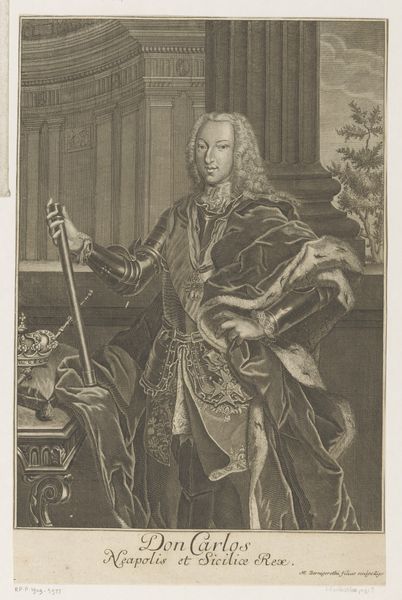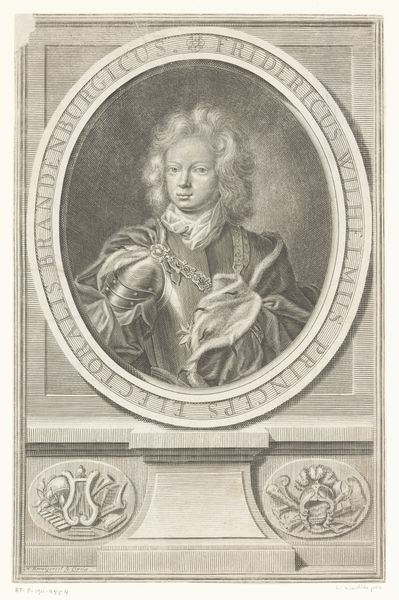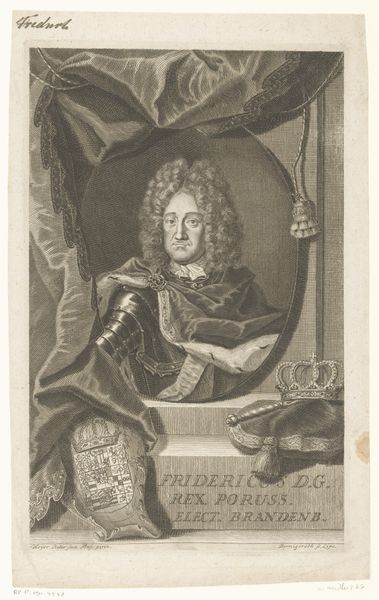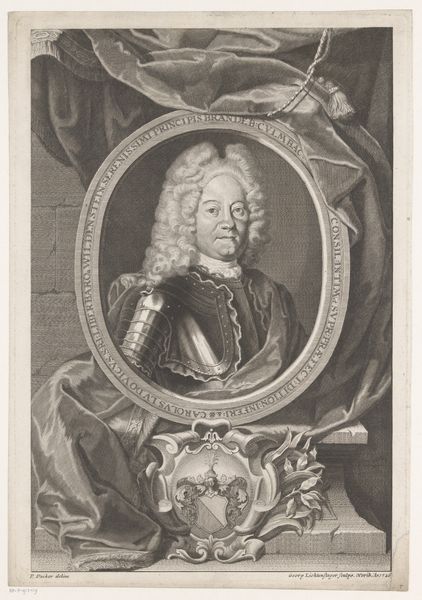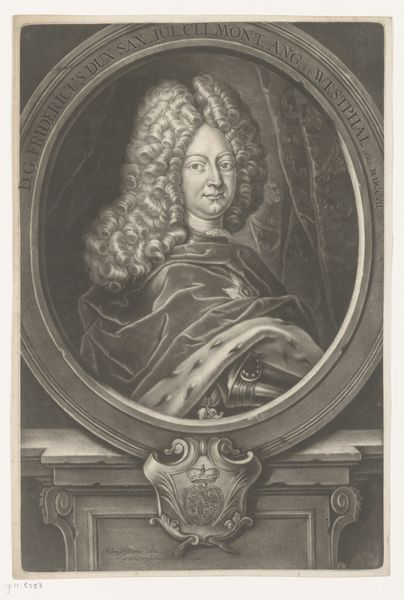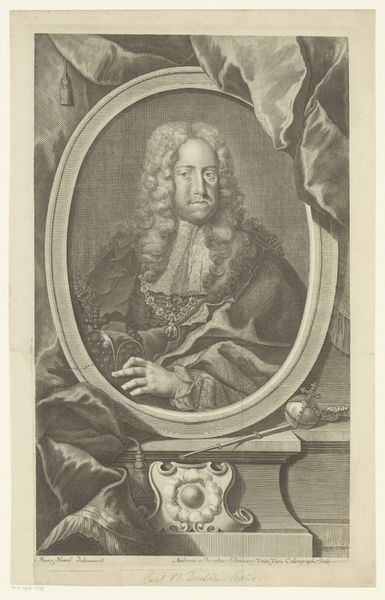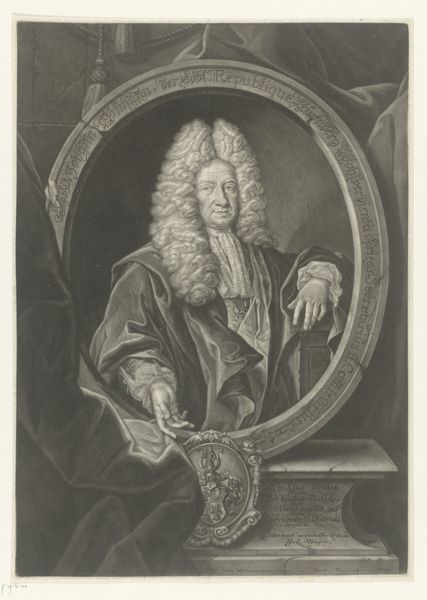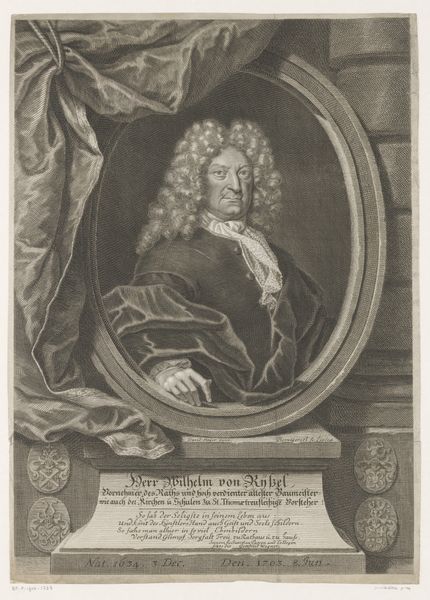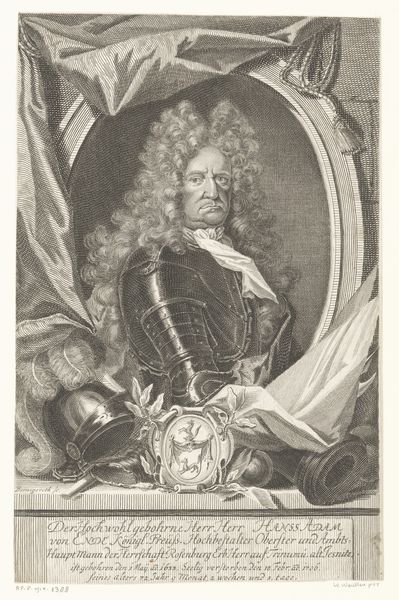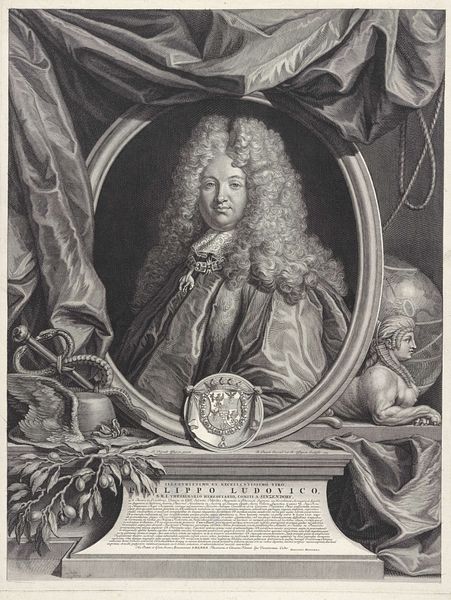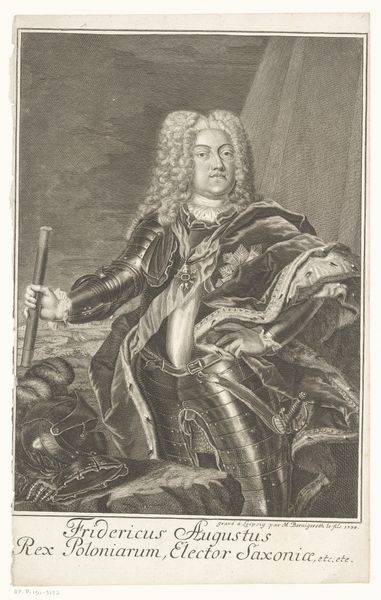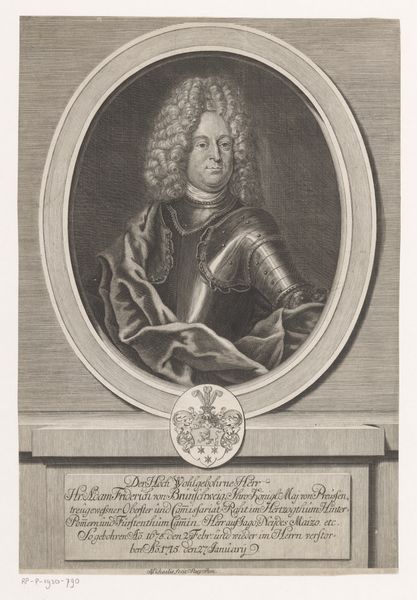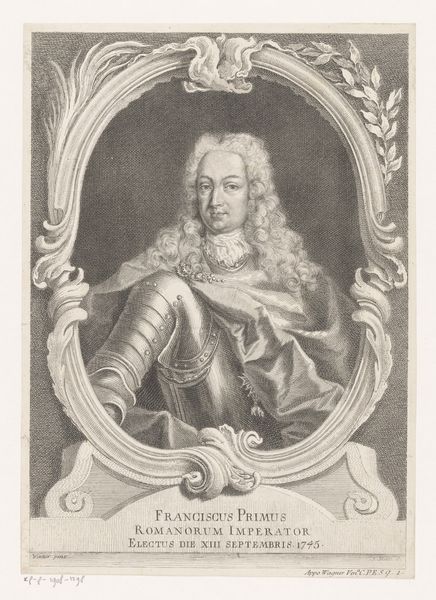
print, engraving
#
portrait
#
baroque
# print
#
history-painting
#
engraving
Dimensions: height 303 mm, width 202 mm
Copyright: Rijks Museum: Open Domain
Editor: So, here we have Johann Martin Bernigeroth's "Portrait of Frederick, Prince of Wales," an engraving from 1740. The detail is just incredible. He's wearing armour but also has this elaborate wig. What strikes you about this portrait? Curator: I think what stands out is the visual contradiction, isn't it? The juxtaposition of the very trappings of aristocratic power, the armour, the column behind him, even the grandiose wig, all rendered through a popular and reproducible medium. Who was this print made for and what was its purpose? Editor: Presumably, to disseminate his image widely, build a political persona? Curator: Precisely! Prints like these were crucial in shaping public perception, and projecting a particular image of power. Consider the rise of a public sphere where images like this become important in solidifying dynastic power, creating a royal brand in a way. It's also fascinating how he's presenting himself. What does the armour imply versus that soft, flowing drape? Editor: Almost like softening a militaristic image with refinement...perhaps reflecting the evolving role of monarchy? More diplomatic than directly martial. Curator: Exactly! The politics of imagery at play here shows that this isn't simply a representation of a person but a construction, a political statement meant to be consumed and disseminated widely. Does that give you a slightly different read? Editor: Definitely. It reframes my understanding; it's less about the individual and more about the public face. It reveals a whole world of calculated image-making! Curator: Indeed. It's a potent reminder that even seemingly straightforward portraits carry a weight of political intention and public relations strategies. Editor: I’ll definitely look at portraits differently from now on. Thanks for shedding light on the historical context!
Comments
No comments
Be the first to comment and join the conversation on the ultimate creative platform.
